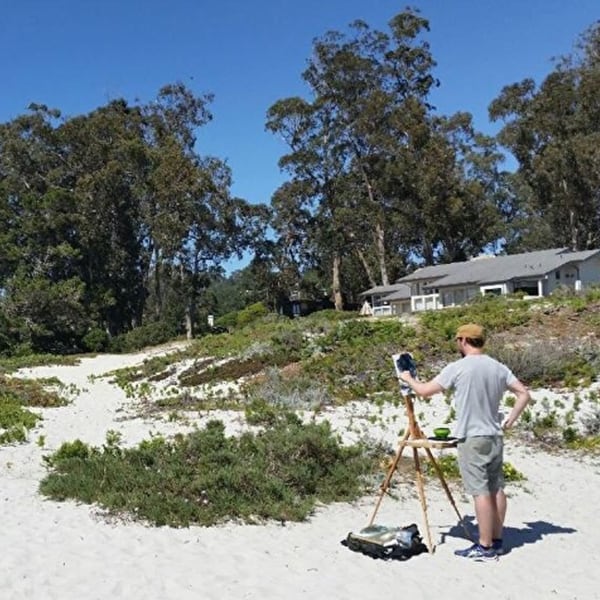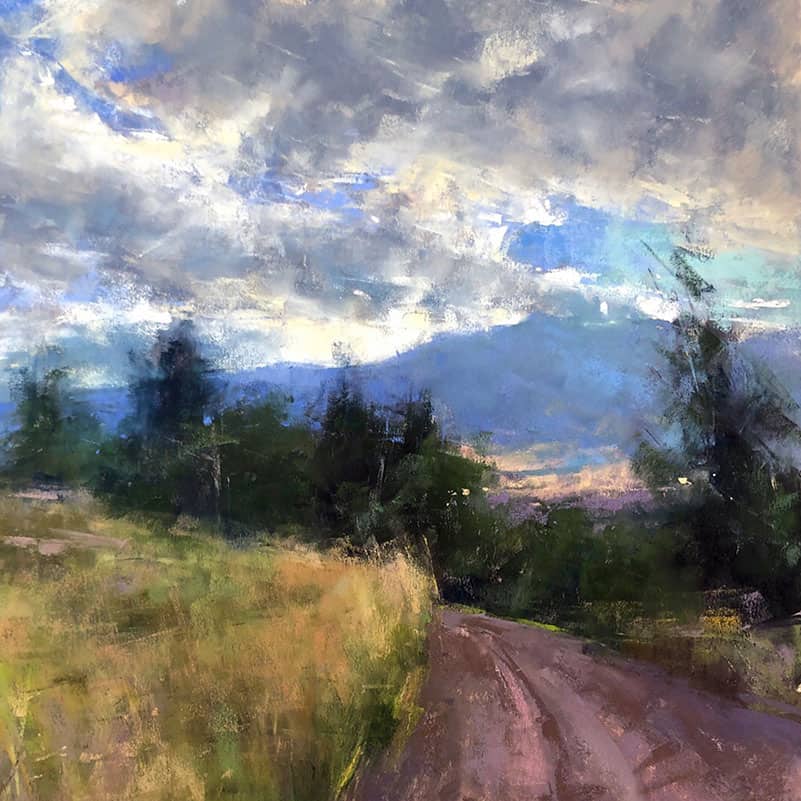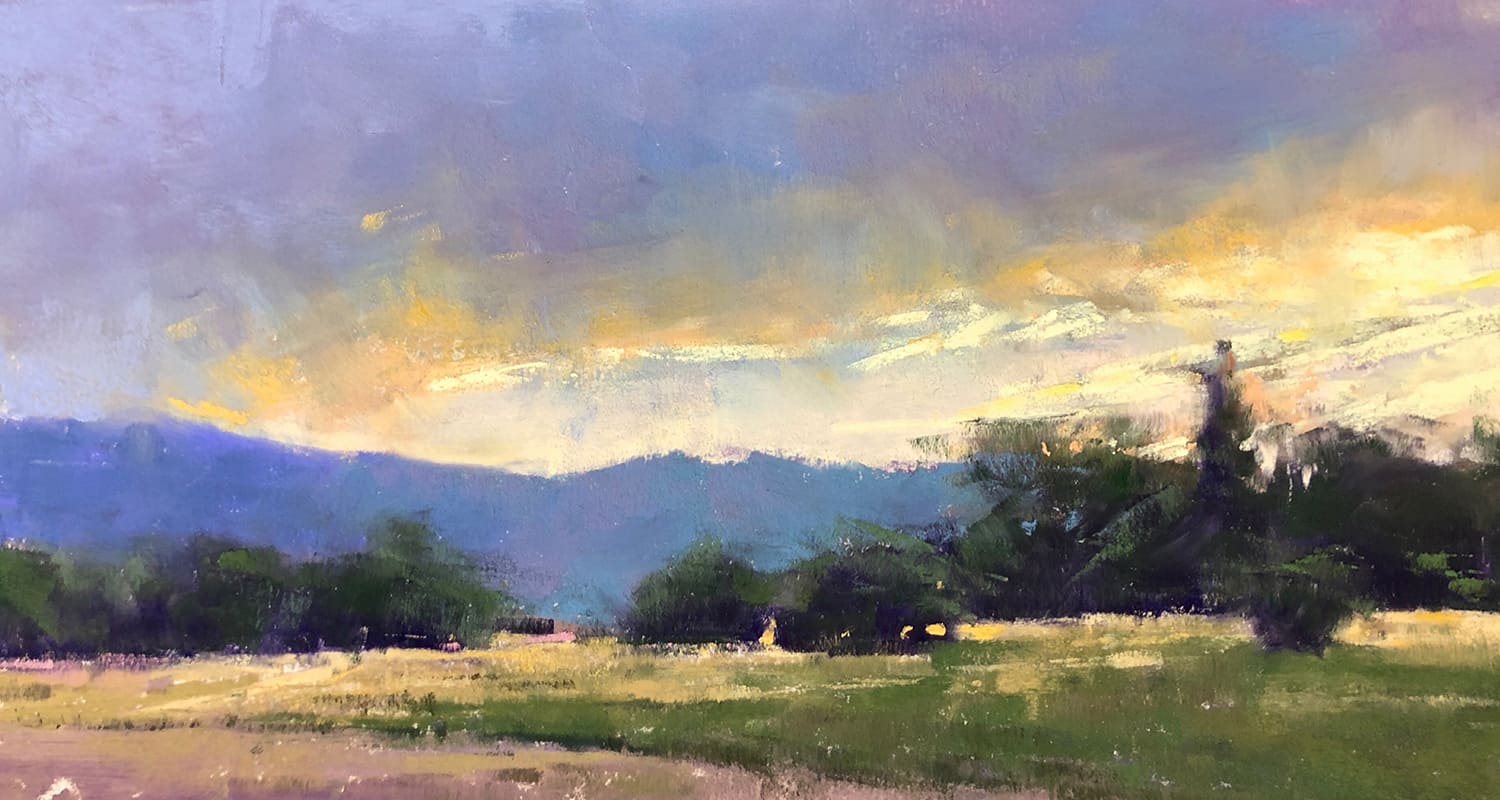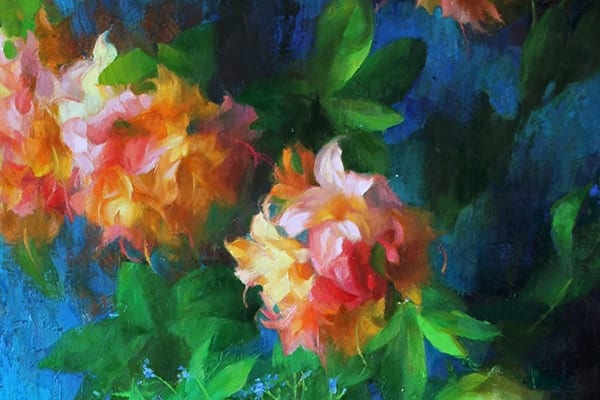Introducing Pastel Painter Jacob Aguiar
 How does being a naturopathic doctor influence your work as an artist?
How does being a naturopathic doctor influence your work as an artist?Growing up, I spent ample time outdoors in rural Kansas, playing in the creeks and fields, and catching frogs or fishing the nearby ponds. This love of the outdoors led me to pursue training in naturopathic medicine, as this approach acknowledges the healing quality of nature. An artist my entire life, I was naturally drawn to landscape painting, as much of the work I do is painted en plein air, or outdoors. Naturopathic medicine reinforces the benefits of painting outdoors and being in the natural environment as much as possible. Further, painting is a critical balance to helping patients regain health. I don’t think I could work as a naturopathic doctor without having painting as a balancing force.
What about pastels inspired you to become an artist in this medium?
I was initially inspired to work in pastels by Richard McKinley, the current president of the International Association of Pastel Societies, and he is an important mentor of mine to this day. My first year working in pastels, I studied for 12-14 hours per day, traveling throughout the west coast and southwest studying with pastelists and painting outdoors. I quickly fell in love with the medium and feel I still have so much to explore. I am drawn to the tactile quality of the medium and the immediacy with which I can paint. It’s the perfect blend of drawing and painting. Some pastelists use pastels as a drawing medium, whereas I prefer to use it as a painting medium, using sticks on the side so I can make broad, loose marks. Because my pastel palette has about 500-600 colors, this allows for a certain degree of spontaneity and freshness in the paintings.

Your website states your works are of the northeast and Wyoming. The northeast is your home, but why have you chosen Wyoming specifically?
Last year, I was invited by the Brinton Museum in Big Horn, WY to spend 2 weeks as an Artist in Residence. While in the Big Horns, I spent every day painting outdoors and taking photo references, which I have been painting from in the studio for the past year. I’ve immersed myself in painting the Wyoming landscape. While I enjoy painting Maine, it’s marshes, and rocky coasts, there’s something very special about the Wyoming landscape. Perhaps it’s the quality of light at elevation, or the varied terrain, the ruggedness of the landscape that keeps drawing me back. Beyond this, there’s a certain allure to painting the mountain west given the artistic history and tradition of this region.
How would you describe the content of your work for this exhibition? Do you have a favorite piece?
The content of work for this exhibition is somewhat eclectic, with paintings of mountains, brooks, and trees. Though each piece is from Wyoming, I like the variety of pieces in this show. My favorite piece from the show is “Shimmering.” Though it’s a small piece, I am happy with the quality of light I was able to achieve. I was interested in capturing the light of the clouds as they interact with the mountain range in the distance.

“Shimmering”
You’re a plein air artist as well as work in the studio. Can you describe your process for capturing such vivid landscapes?
My process is fairly consistent from piece to piece, whether painted outdoors or in the studio. I start with a block-in of the scene with local color, and wet the pastel with alcohol to create a wet underpainting and cover the entire surface. Once this is dry, I work from dark to light, as one would with oil paint or acrylics. I work slowly building up my values (or lightness and darkness), working to capture the intensity of color and value contrast in each scene. The finishing touches tend to be small marks, dots, dashes, and lines to create visual interest and guide the viewer through the scene. Without structures or animals in my paintings, I have to be very conscious of providing enough interest in focal areas to keep the viewer engaged.





